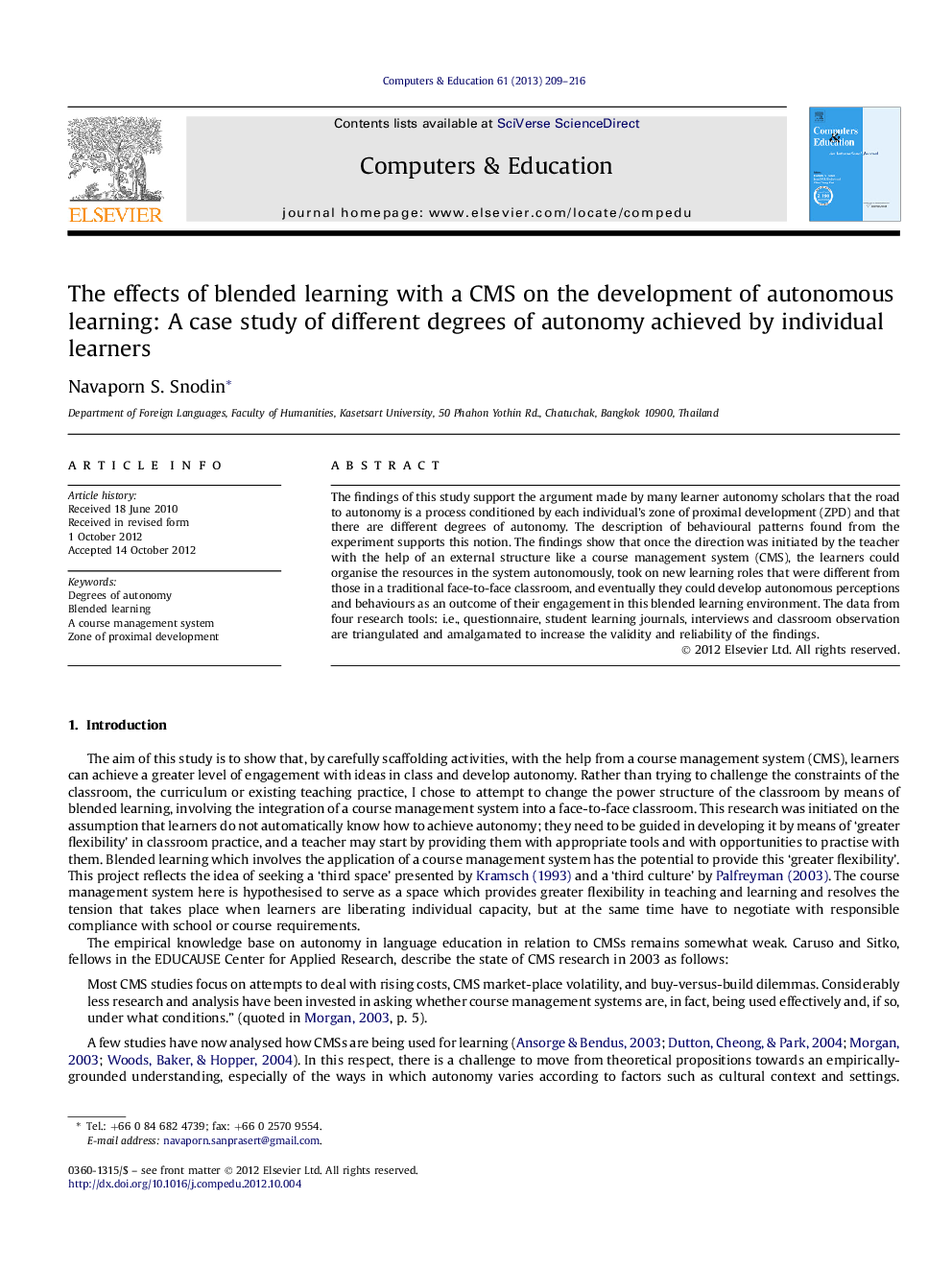| Article ID | Journal | Published Year | Pages | File Type |
|---|---|---|---|---|
| 348537 | Computers & Education | 2013 | 8 Pages |
The findings of this study support the argument made by many learner autonomy scholars that the road to autonomy is a process conditioned by each individual's zone of proximal development (ZPD) and that there are different degrees of autonomy. The description of behavioural patterns found from the experiment supports this notion. The findings show that once the direction was initiated by the teacher with the help of an external structure like a course management system (CMS), the learners could organise the resources in the system autonomously, took on new learning roles that were different from those in a traditional face-to-face classroom, and eventually they could develop autonomous perceptions and behaviours as an outcome of their engagement in this blended learning environment. The data from four research tools: i.e., questionnaire, student learning journals, interviews and classroom observation are triangulated and amalgamated to increase the validity and reliability of the findings.
► The knowledge on autonomy in language education in relation to CMSs remains weak. ► This study contributes to such empirical knowledge. ► The blended learning can inspire students to become more autonomous. ► The road to autonomy is a process conditioned by each individual's ZPD.
